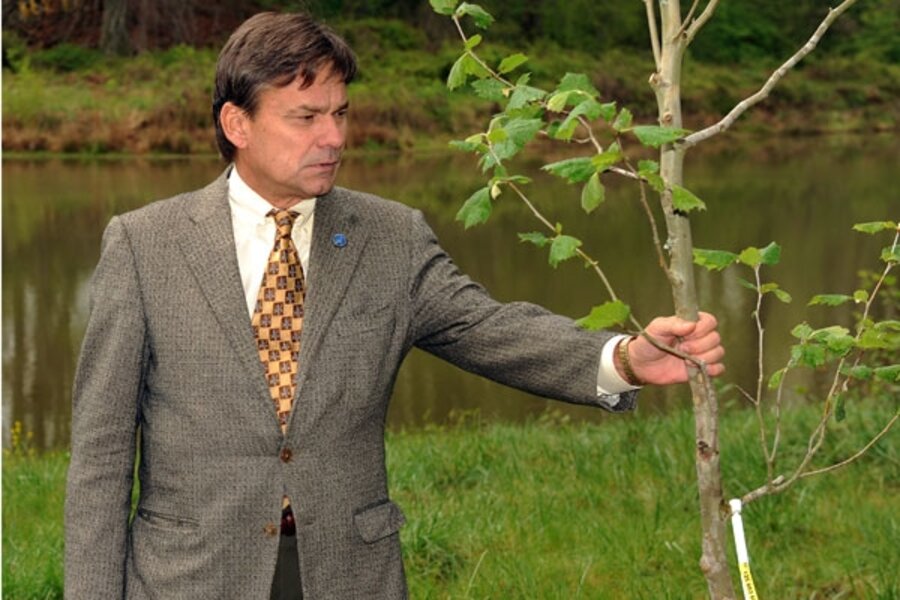A moon tree and space tomatoes
Loading...
All the talk today about the anniversary of the first landing on the moon brings back memories for many people. One of mine is about gardening.
Back in 1971, NASA astronaut Stuart Roosa, on his way to the moon aboard Apollo 14, took along seeds of five tree species – Douglas fir, loblolly pine, redwood, sweet gum, and sycamore. (Click here for more background and details.)
Roosa was a smoke jumper for the US Forest Service before he became an astronaut, so when he and the seeds returned from their historic journey, the Forest Service germinated the seeds. The resulting trees were dubbed "moon trees," of course.
"Moon trees now grow at state capitols and university campuses across the nation," says NASA. "A Moon Sycamore also shades Roosa's grave at Arlington National Cemetery."
A second-generation moon tree was planted this year at the National Arboretum in Washington on Earth Day in anticipation of the 4oth anniversary of the Apollo program – and today's first landing on the moon. (Roosa was part of the third NASA landing on the moon.)
Moon sycamores are also available to the public through the Historic Trees program of American Forests.
For those of you who weren't around in 1971 -- or weren't gardeners – taking seeds on manned missions into space wasn't all that unusual. There were various experiments to see how some would grow.
And in 1983, Park Seed Co. took part in a special program by sending tomato seeds on a space shuttle flight:
The purpose of Park Seed's part of the experiment was to observe the effects of deep space on seeds. The cargo remained in Earth orbit for 5 years until 1989, when Columbia Shuttle Mission STS-32 retrieved the LDEF, and the seeds were returned to Earth. They were then distributed for use in science experiments. Ultimately, 132,000 experimental kits were sent to 64,000 teachers in more than 40,000 schools, involving more than 3 million students, throughout the United States and 30 foreign countries - one of the largest science experiments ever.
Along with other garden writers at the time, I grew some of those tomato seeds, feeling a bit daring. Who knew what five years in space might do to a seed? The plants and the tomatoes were very normal, of course..
But it was fun to recall all that today, along with the moon trees and the celebration of the first people on the moon.
Editor’s note: Here’s more about gardening: The main Monitor gardening page. Our blog archive. Our RSS feed.
You may also want to visit Gardening With the Monitor on Flickr. If you join the group (it’s free), you can upload your garden photos (and possibly win a prize). Join the discussions and get answers to your gardening questions.
And finally, you can now follow us on Twitter.





